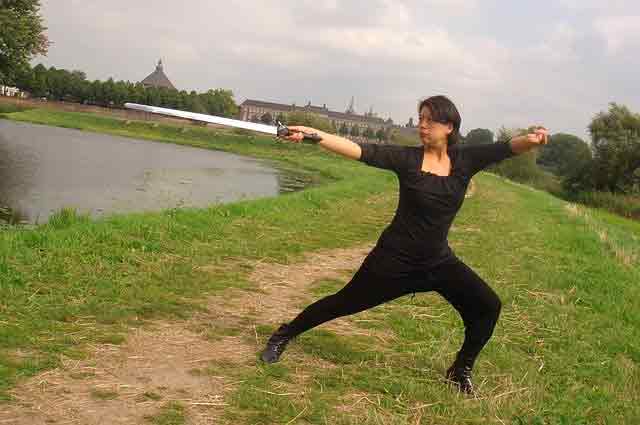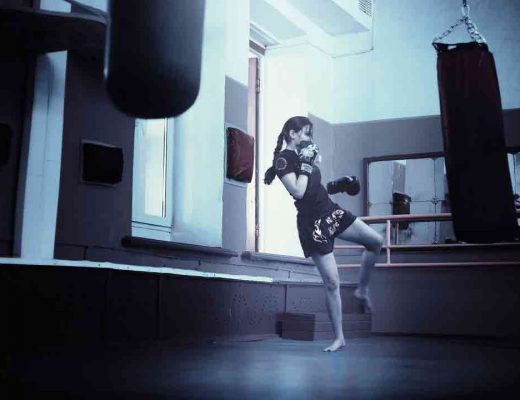Introduction
What is the difference between Karate and Kung Fu?
And why should you consider one over the other?
While on the surface, both martial arts may look quite similar to the untrained eye, there are in fact quite a number of key differences between the two martial arts.
On today’s article, we’ll explore the differences between Karate and Kung Fu.
Origin

Karate was developed in Okinawa.
The Japanese had banned the use of weaponry which prompted locals with influence from Chinese Kung Fu brought over by the merchants that traded with them to develop a martial art now known as Karate to defend themselves.
Over the years, the original style of karate had spawned over a dozen variations of it such as Shotokan Karate, Shorei ryu Karate, Goju Ryu, and the ever popular Kyokushin Karate who many people claim is the strongest karate style on the planet!
Chinese Kung Fu on the other hand started back in ancient China over 4000 years ago in a period known as the Xia Dynasty.
Legend has it that the yellow emperor was the one to introduce it to its people.
Through the centuries, the martial art has evolved and formed several different disciplines within Kung Fu such as the world famous Shaolin Kung Fu, Wing Chun, Hung Gar, Wushu, and a whole host of other styles that are too long to write about in one post.
Over time, Chinese Kung Fu made its way to other countries and influenced the development of martial arts there such as in Japan and Korea.
Training
Karate
Karate training usually comprises of 3 elements such as Kihon, Kata, and Kumite.
Kihon
Kihon training focuses on teaching the fundamentals of karate because without a strong base, you will never excel in the martial art.
Typical things taught in Kihon include stance training, punching, kicking, elbow and knee strikes as well as blocks.
Kata
Kata’s are a prearranged sequence of techniques and movements that a practitioner would utilize that demonstrate either offense, defense, or a combination of the two.
Katas help a student develop good form, technique, muscle memory, good breathing technique, timing, body mechanics, and visualization.
It can be practiced either alone or with partners.
Here is an example:
Kumite
And finally we have Kumite which is sparring.
In this category Karate students get the opportunity to apply what they learned in a real life controlled setting.
You can learn all the techniques in the world but if you don’t have the experience around how to apply them properly, they won’t be nearly as effective, and that’s where sparring comes into the equation.
Sparring can vary vastly between organizations and different karate styles.
For some Karate styles, full contact sparring is allowed such as those in Kyokushin, while others take a more modest approach to sparring only allowing semi-contact or even light contact.
Kung Fu

Due to the various hundreds of different styles of Kung Fu that exists, I will refer to Kung Fu as a collective.
In Kung Fu there are two main types: hard and soft.
A hard style would typically encompass a Kung Fu style such as Shaolin Kung Fu where a force tries to meet another force. Take for example, someone that tries to delivery a punch to you, you can either block the attack using force, or you could attack back.
A soft style such as Tai Chi on the other hand focuses on using the attacker’s force against them by redirecting where the attacker’s force goes and then making the attacker off balance.
Take for example, someone throwing a punch at you. Rather then trying to block the punch or counter attack, you simply guide the punch even further along but away from you, sending the attacker off balance or redirecting the direction of the punch. In either case, the attacker is sent off balanced.
In Chinese Kung fu, training can consists of patterns similar to what you see with katas but adapted to Chinese Kung Fu.
In addition, striking, blocks, locks, throws, meditation, use of Qigong, the whole shebang is taught depending on which style of Kung Fu you are learning.
Furthermore, students get to spar in controlled environments as well to work on their reflexes and timing.
As you can tell, Kung Fu’s curriculum is much more vast and deep when compared to Karate.
Uniforms

Uniforms is another way that one can tell the two apart.
Karate uniforms follows your traditional stereotypical martial arts school uniform donning a bleach white uniform, with a colored belt wrapped around their waist. A darker belt usually signifies a higher ranking in Karate.
Kung Fu on the other hand has various uniforms depending on the style of the practitioner and come in all shapes and sizes.
Take for example Shaolin Kung Fu.

You may have seen Shaolin monks wearing different colored robes such as the classic orange, grey, yellow, or saffron.
Wushu practitioners on the other hand might wear a black or white outfit.
Unlike Karate though, belts were traditionally not used in Kung Fu.
Nowadays however, you might see some schools assign their students a sash instead to signify rank.
Another key distinction between the two is the use of shoes in practice.
Kung Fu students all wear shoes in class, with the traditional shoes being black, however over the years a number of different shoe manufacturers have emerged in the market offering a variety of different styles such as the Feiyue brand.
Today you might be able to snag yourself a pair of Kung Fu shoes in either white or grey.
Karate students and masters on the other hand do not wear shoes when they are practicing Karate.
One of the main reasons for this is for cleanliness purposes as Karate tends to be practiced inside of a dojo.
Movements
Kung Fu is said to move in circular motions as opposed to straight linear motions like Karate.
This gives Kung Fu practitioners a more lateral fluid like motion in their moves and also defenses. When you watch a Kung Fu practitioner practicing martial arts, their movements and techniques look very graceful as if they are dancing.
Because of their less rigid nature, Kung Fu practitioners are able to be more flexible and adaptable in how they defend and attack opponents.
Often times you will be caught off guard by some movement that just appeared to come out of no way in an odd angle because of Kung Fu’s deceitful nature.
Some martial arts that highlight this point is Drunking Boxing, and several of the Shaolin Kung Fu Animal styles.
Furthermore, unlike Karate which tends to have short pauses between attacks, Kung Fu tends to flow continuously whether that being just movement or attacking.
Karate practitioners on the other hand move in straight precise limited motions rather than circular motions in both offence and defense. For example, the front stance in Karate and the follow up stances for attacking an opponent.
A lot of the power in Karate is generated by the rotation of the hips and the forward motion of the body helps propel the karate practitioner forward to launch their attack in the direction of their punches or kicks. Usually karate practitioners try to subdue their opponents in one quick swift attack, a concept in Karate known as “one strike, one kill.”
Weapons
Both Karate and Chinese Kung Fu teach the use of weapons during training, however the types of weapons being taught differ between the two.
You may notice some weapons that are similar such as swords and staffs, but the type and make of the weapon is completely different and the way they are handled is also different.
Once again, Kung Fu’s use of weapons is very circular and fluid, whereas Karate is more linear and straight forward.
Here is a table of Karate weapons that are taught in Karate:
| Katana |
| Nunchaku |
| Sai |
| Tonfa |
| Bo Staff |
| Kamas |
| Surujin |
| Tekko or Tecchu |
| Sansetsukon |
Here is a table of some Kung Fu weapons that are taught in Chinese Kung Fu:
| Spear |
| Three section staff |
| Chain whip |
| Butterfly Sword |
| Broad sword |
| Straight sword |
| Twin Tiger head hooks |
| Iron Fan |
| Pu Dao Halberd |
| 9 rings Pu Dao |
| Kwan dao |
Stances

Both Kung Fu and Karate have very different stances that they use in the martial arts as well as similar ones.
In Karate, stances are more rigid and solid when compared to Kung Fu.
You might be familiar with the Karate forward stance where one foot is placed in front of the other with a bend in the front knee while the back leg is extended.
This is a very basic yet fundamental stance that is used quite often in Karate.
This front stance helps proper the person forward in the event of an attack on an opponent.
The solid base plus bent at the knee as like a launch pad for launching the person forward.
Other stances you might see include the cat stance, cross stance, back stance, and closed leg stance.
Each stance serves a specific purpose whether to attack or defend.
Chinese Kung Fu stances on the other hand, typically possess a more fluid like motion similar to water that is flexible and able to be adapted to the situation.
These Kung Fu stances establish solid footing and draw their power from the ground.
Typical Kung Fu stances you will see include the following:
- Horse Stance
- Forward Stance (Bow and Arrow Stance)
- Cat Stance
- Cross Stance
- Crane Stance
- Drop Stance
Some of these stances may look nearly identical to Karate stances such as the forward and horse stance.
While similar in nature, the applications in style are different and shouldn’t be confused between the two.
Typically when you observe stances between the two, Chinese Kung Fu would look more graceful, but Karate more stable.
Ranking

In Karate, rank is denoted by the color of one’s belt, usually starting at the white belt and ending in black belt.
As each school and style will use different varying colors for belts to denote rank as well as stripe colors, there are no standardized belt ranking system in Karate, however here is what you would typically see:
| White Belt |
| Yellow Belt |
| Orange Belt |
| Green Belt |
| Blue Belt |
| Purple Belt |
| Brown Belt |
| Red Belt |
| Black Belt |
The black belt rank further increases all the way up to 10th degree (usually reserved for the founders of the art).
Kung Fu on the other hand, traditionally did not have a belt system.
Instead, it was based on a seniority system whereby the person that joined the school first would be considered a higher rank regardless of their skill level.
Today however, you will see some schools that have adopted a ranking system similar to Karate where a sash would be worn around the waist, this is especially true in North America.
Depending on which style and school that you study at, the color ranking system might look like the following:
| White Sash |
| Yellow Sash |
| Orange Sash |
| Green Sash |
| Blue Sash |
| Purple Sash |
| Brown Sash |
| Red Sash |
| Black Sash |
Conclusion
Here’s a quick recap of what we discussed:
Karate got its start over in Okinawa, while Chinese Kung Fu was developed in China thousands of years ago. Karate’s training encompasses three areas: Kihon, Kata, and Kumite, while Kung Fu training is a lot more extensive covering additional things such as mediation, qigong, throws, and joint locks.
Karate practitioners tend to move in linear fashion for both offence and defense, whereas Kung Fu tends to move in circular and lateral motions.
Both martial arts teach a variety of different weapons to their students, however there are quite a number of differences between the weapons themselves and the handling of them. Furthermore, the stances taught in both share some differences and similarities.
For ranking, Karate uses a colored belt system. Kung Fu in the past did not use such a system, however in modern times, a coloring system was introduced to students, especially in countries outside of China.
Regardless of which one you are studying or end up choosing, both martial arts will bring you a number of benefits such as increased confidence and self-esteem, improved cardiovascular fitness, discipline, and the ability to defend yourself in the future.




No Comments